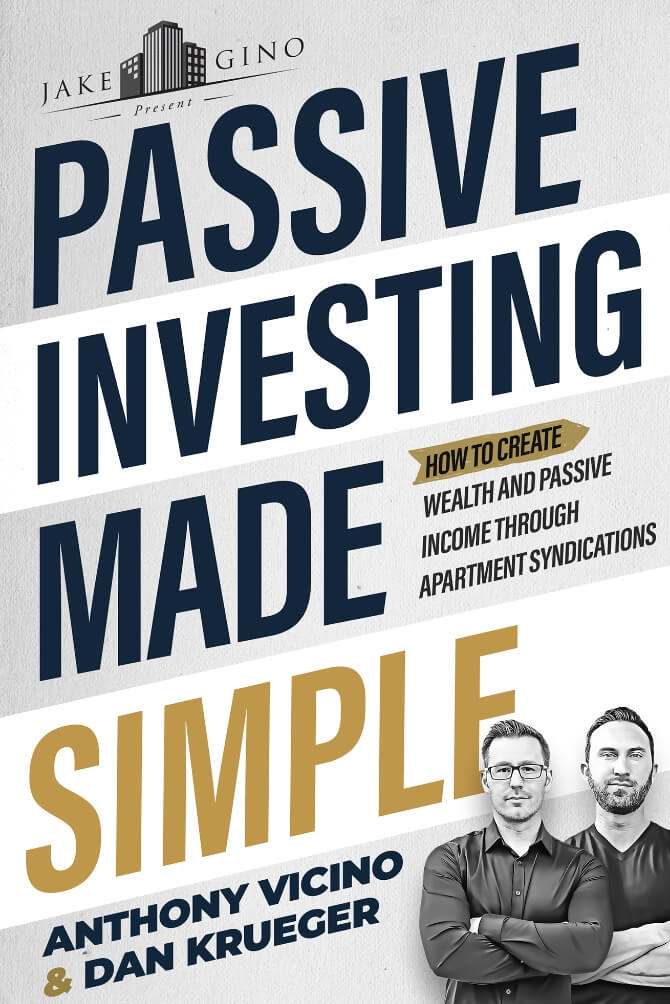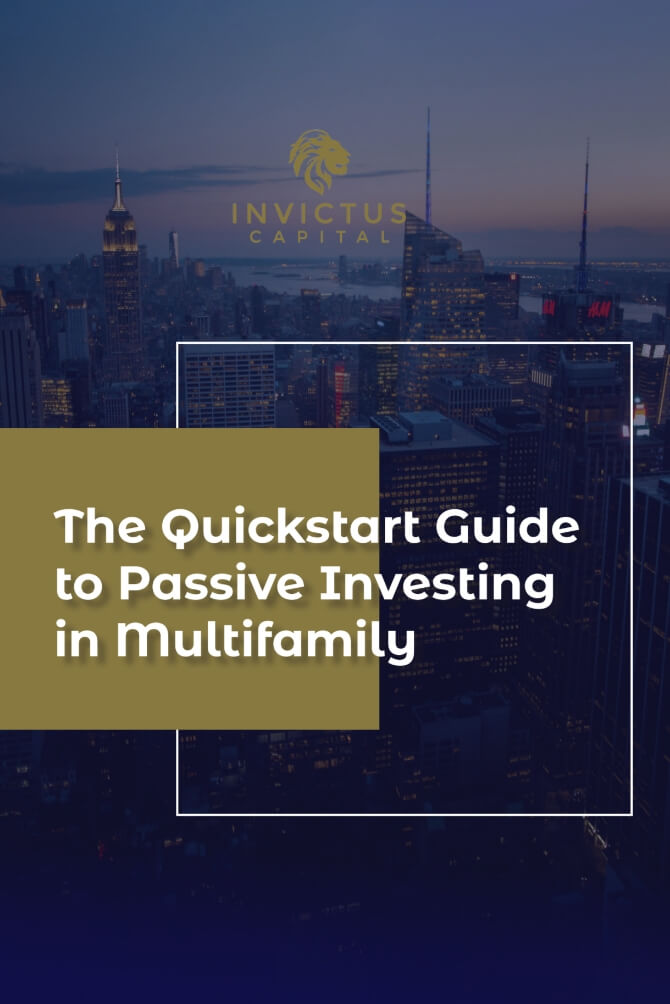For today’s episode, we will be talking about a very special under ten-minute episode as we dive into a very complex, very convoluted, very politically charged topic.
This week we’re going to unpack St. Paul’s recently passed rent control law that is the most strict that has ever existed in this country.
We will talk about these things…and more in another episode of Multifamily Investing Made Simple in under 10 minutes.
The audible version Passive Investing Made Simple: How to Create Wealth and Passive Income through Apartment Syndications coming soon!
Tweetable Quotes:
“Tt’s simple economics. If there is no incentive for somebody to come in and build the supply that’s needed, they’re not going to do it. – Dan Kreuger
“In all cases, rent control tries to solve a supply issue and all it really does is make the issue worse.” – Anthony Vicino
LEAVE A REVIEW if you liked this episode!!
Keep up with the podcast! Follow us on Apple, Stitcher, Google, and other podcast streaming platforms.
To learn more, visit us at https://invictusmultifamily.com/
**Want to learn more about investing with us?**
We’d love to learn more about you and your investment goals. Please fill out this form and let’s schedule a call: https://invictusmultifamily.com/contact/
**Let’s Connect On Social Media!**
LinkedIn: https://www.linkedin.com/company/11681388/admin/
Facebook: https://www.facebook.com/invictuscapitalventures/
YouTube: https://bit.ly/2Lc0ctX

Rent Control Made Simple
Anthony Vicino: [00:00:14] the Hello and welcome to multifamily investing made simple to podcast, it’s all about taking the complexity out of real estate investing so that you can take action today. I’m your host, Anthony Vecino, joined as always by Dan. Don’t control my rent, Krueger.
Dan Krueger: [00:00:29] Oh, just drink it out of an Invictus mug. No big deal.
Anthony Vicino: [00:00:31] Hmm, I’m not. I got a bottle of water. Now we are. This is a very special under ten-minute episode as we dive into a very complex, very convoluted, very politically charged topic. But we’re going to try and simplify it as much as possible in the next ten minutes. And for those of you who want to learn even more interested in diving even deeper than pay attention, I believe the episode before this that came out on Tuesday is a 40 minute deep dive live webinar that we held with investors all about rent control. So go check that out. If this does not satisfy your blood lust now, Dan, don’t tell me about Tell me about rent control. Go.
Dan Krueger: [00:01:15] It stinks. That’s it. No. So here’s the deal. Let’s get you up to speed as quickly as possible. For those of you who are not aware and those are you are not local. Maybe you didn’t hear about this. You probably did, because it’s kind of makes the news. It was in The Wall Street Journal. St. Paul just passed the most strict rent control law that has ever existed in this country. We’ve never had anything as strict as St. Paul just voted yes on a couple of days ago. Number two Minneapolis right next door had a similar thing on the ballot during the election that voted whether or not the City Council got to make the decision about whether or not there was rent control. So those are two things that were on the ballot. They both passed. Minneapolis got the ability to make that decision themselves via the City Council. In the mayor, which we’ll get to in a second, is actually a good thing. And number two St. Paul voted for rent control, not just rent control, but the most strict rent control, which is three percent across the board, regardless of property size or type, or age. And it does not factor in inflation just straight three percent. And that is the most strict thing ever. It doesn’t matter if somebody moves out if a tenant changes over that, the cap stays. So that is the most strict rent control that we’ve ever seen, and that is a little bit of a wrench in the whole value add business model because you are not able to go in there and improve a unit, add value, make it a better living experience with the tenant and get a little bit more rent to make a profit for yourself. That doesn’t work anymore. So what’s that mean for us? What’s that mean for the rest of the market? Almost. I mean, for investors, if you
Anthony Vicino: [00:02:53] Want to learn about that stuff, I would. I would highly recommend you go dive into the webinar where we dive really deeply into the ramifications of these local ordinances and how we’re responding as investors in this market
Dan Krueger: [00:03:04] As deep as we can. Because there’s a lot of them, there’s a lot, a lot.
Anthony Vicino: [00:03:06] And that’s the thing. There’s a lot of unknowns. But for this under 10-minute episode, let’s talk even more broadly from a high level about rent control and specifically what problem is rent control trying to solve and why. In our opinion and our experience in the data that we’ve seen why it fails to do that. So at its core, rent control is trying to solve a supply issue. There’s a shortage of supply which when there’s not enough supply and there’s increasing the amount of demand, then the price goes up. And the concern is, well, if there’s not enough supply and the price is getting more expensive, then people can’t afford it. Why does this? Rent control, broadly speaking, whether it’s the St. Paul model or the San Francisco model, why does it fail to solve this issue, even though it is very well-intentioned?
Dan Krueger: [00:03:56] Yeah, I mean, it’s really it’s simple economics. If there is no incentive for somebody to come in and build the supply that’s needed, they’re not going to do it. And so markets have a funny little way of working themselves out, right? If there’s not enough of a thing, prices rise. That creates a profit incentive for people to come in and produce the thing that’s in demand so that they can make money. And then as those things are produced and you have more supply than comes into to meet the demand and things become in balance or equilibrium, and then if they go, if we get too much of the thing, then the price comes down and it goes back to equilibrium, so things tend to balance themselves out. Under normal market conditions now, if you throw a wrench in that, a merkin cannot function the way it should. So if you come in and you place rent controls in there, especially these extremely strict ones at St. Paul just said there’s no profit incentive to build so that supply constraint gets worse because the building that was happening is going to stop. So now we’ve got an even exaggerated version of the supply constraint, which guess what? That’s going to make the problem even worse. So if you can’t raise your rents and you’re a property owner, what are you going to do? You’re going to turn your apartments into condos and sell them off, and the supply issue gets even worse. And if you own a property and you don’t come to it and you want to keep trying to make it work, you’re not incentivized to improve anything because you’re not going to get paid back for it. So everything turns into a slum. So the existing assets get crummy or no one builds new ones and the ones that are existing that don’t get crummy or will get converted into something else, and it all just gets worse.
Anthony Vicino: [00:05:30] So and even if there was development still occurring, let’s say the rent control doesn’t affect the new development. Even in that environment where builders are now incentivized, they’re not being penalized because luxury in a lot of markets is exempt from any kind of rent control regulation. What it’s going to do then, is if we have these old buildings that we can’t raise the rent on these Class C Class B buildings, which you can’t build new. Unfortunately, it’s cost-prohibitive, so the only things you can build new are Class A. Well, if that’s where the investment opportunity is in the money, then that’s where people are going to go. So they’re going to take their units like, Dan said. What we see across all markets when rent control goes in is everybody turns their units into condos, taking more supply off the market. They start to build so they tear down their buildings and build something new. They’re taking more supply off the market and a really interesting side effect, which I had had no concept for. Like there are so many downstream effects that I wasn’t cognizant of, but I read a book a couple of months back called Basic Economics by Thomas Sowell, and he talks a lot about this concept.
Anthony Vicino: [00:06:31] And one of the second-order effects is if you put an arbitrary cap on rent, then people can now afford things that previously they couldn’t afford. And that sounds like a good thing. But let’s take this a little bit further. If I’m a single male and I could only afford a one-bedroom previously, and that’s what the market is dictating, that’s all I could afford. Well, in a rent-controlled environment, I can now afford maybe a three-bedroom apartment, and I want that extra space, especially given COVID. So I’m going to go move into that unit and take two more units off the market because I’m one guy. I have a three-bedroom. Now there’s a family out there who needed that three-bedroom. They’re not going to get it, thus making the supply issue even worse. So in all cases, rent control tries to solve a supply issue. And all it really does is make the issue worse.
Dan Krueger: [00:07:17] Yeah, yeah. And we’ve never seen the example of rent control achieve the desired outcome. It’s never happened, which is why this is so aggravating for us, data-focused people. We’re looking at this and saying why on the nine millionth attempt of this, would it suddenly work, especially in its most strict form. So it’s quite frustrating for us, but at the end of the day, we’ve, you know, been busy this week re-underwriting all of our deals that we’ve got and we’ve crunched the numbers and luckily we have been so pessimistic with our assumptions on all of our deals, which we’ve been made fun of other people in the past that like after we get through our value, add business model on our properties that we own, we’ve already got three percent built-in and everyone always looks at that and says, Well, that’s not realistic. Well, it works out, right? So if you plan for the worst, it tends to work out if something negative does happen. So it’s kind of comforting in that sense that, hey, our logic is actually working here. But you know, we’ve pivoted, we’re starting to pivot, which I should say. So it’s not like there are no opportunities here. We definitely think that the St. Paul situation is going to get much laxer. Even the mayor said that the current status of that of whatever the ordinance, there’s the word I’m looking for this. The ordinance, as it stands, is too strict and they want to make it better. And so, you know, if they just pull it back a little bit to be the normal kind of rent control that you see in other markets where it’s inflation plus a few percentages. Once that works, that’s more than we need, we can still get our our our our job was done under those constraints.
Anthony Vicino: [00:08:52] And here’s an interesting consequence of rent control, which we talked about in the deeper webinar on the previous episode. Long-form is the fact that when rent control goes into effect, it makes it harder to cash flow. You’re not going to be getting the great cash flow that you were getting previously because of the rent, you’re not going to be keeping pace with the expenses. And so it’s going to get thinner and thinner. But because there is a cap on supply, when supply gets capped, the price of that supply goes up. So we’re going to see even more cap rate compression, which is, you know, one-half of the valuation model in a wide divided by cap rate equals the building’s value. But the cap rate is way more powerful than now. So if we can compress that cap rate even more then we’re going to see big returns on the back end when you go to exit or refinance rather than during the life of the hold. So it’s going to cash flow less, but you’re going to have more incentive on the back end. And if you look at New York and San Francisco, where there are like two percent cap rates, that’s what happens is it just keeps getting super compressed.
Dan Krueger: [00:09:48] Yeah. And then the other thing to note is, well, just to kind of wrap things up is that even if there’s a rent control law enacted, that doesn’t mean that you can’t increase your revenue through ways other than rent. So there’s a lot of opportunities to look at. All you really need to do is kind of pivot your strategy. And as long as you haven’t been overly optimistic in your underwriting, if you’re an investor and you haven’t been over-leveraging a slight pivot, we’ll get the job done and that’s what we’re doing. So we’re looking at more at rubs, we’re looking more parking fees, pet fees, concierge service fees, and looking at that other income category to fill in the gap. Because historically, we’ve just kept it simple and said, Yeah, we’re not going to overfeed people, we’re just going to raise the rents. But if that rent tool in our toolbox has been taken away, then we’ll just build back for utilities like everybody else, so you could still get to the same place. It’s kind of annoying to have to jump through the hoops and deal with all those rigmarole, but you know, you can still get the thing done. You just have to be looking for opportunities and not focusing on problems, which is what we do.
Anthony Vicino: [00:10:45] Exactly. So if you want to learn more about rent control specifically as it affects us in St. Paul and Minneapolis, we’re just larger markets. Go check out that longer episode, the live webinar that we did where we fielded questions from investors just like you. In the previous episode, I believe I might be wrong about that. Might be the one coming out afterward. I get confused, but we appreciate you taking some time to join us this week. If you could do us a favor. Go over to iTunes. Drop us a review. Tell us how much you love rent control or hate rent control. We’d love to hear from you and we’ll see you next week.


